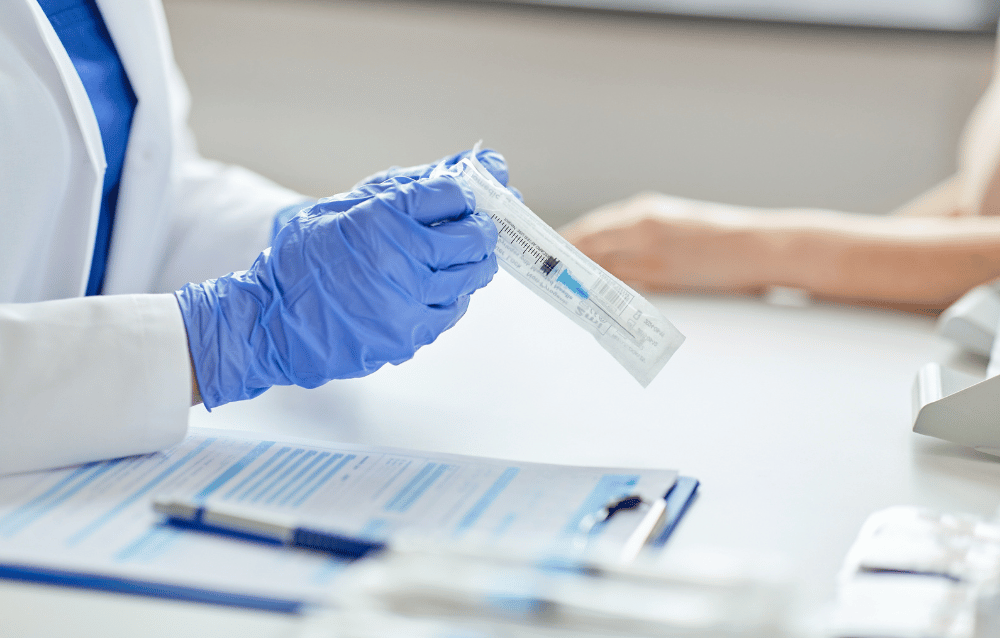How and Why Enhanced Tear Resistance Helps Stop Fiber Tear in Healthcare Packaging
Medical
April 10, 2024Reading time: 3 minutes

Fiber tear in healthcare packaging refers to a fiber-based material being broken or torn open. It can present myriad issues, from thermoformed trays that don’t peel open cleanly to the detrimental exposure of medical devices to contamination, or improper pharmaceutical product protection.
Several factors may contribute to fiber tear. Across packaging formats, a leading cause is paper that lacks fiber characteristics to support the needs of the application. Insufficient fiber length, for example, could weaken interfiber binding and healthcare packaging strength, significantly decreasing tear resistance.
Why Tear Resistance is So Important
When it comes to protecting healthcare products, there’s zero tolerance for fiber tear. Integrity must be maintained to keep the items inside of a package safe, yet packaging must also deliver a user experience that prioritizes patient safety, health, and wellbeing.
To accomplish both, even the smallest, seemingly innocuous, tears can spell disaster. Consider these hypothetical scenarios:
-
In an operating room, a medical device is prepped for use in surgery, and there is a small tear in the device packaging. This could play out in one of two ways as the operation progresses. If the tear is caught, the device is disposed of, and it’s replaced by a sterile device. No risk of contamination, and the crisis is averted. Conversely, if the torn packaging isn’t noticed and the device is still used, patient health risks increase as does potential litigation.
-
For pharmaceuticals and nutraceuticals, blister package lidding that fails to remain intact is cause for concern. Beyond contamination issues, pills may be damaged, which could affect proper dosing and ultimately patient health. Fiber tear may also make blister pack dispensing too easy to accomplish, which could lead to a potential overdose or poisoning danger in the hands of a child.
These brief examples illustrate the importance of tear-resistant packaging, but achieving desired tear resistance requires aligning needs with materials.
Material Selection for Tear Resistance
Balancing healthcare packaging strength with desired performance requires understanding and prioritizing the characteristics that influence material selection. Working with a packaging expert, such as Amcor, can help narrow the scope of needs, including:
Microbial Barrier Protection
In addition to resisting tears, packaging must also resist moisture, prevent microbial penetration and, depending on the contents, may also need to inhibit exposure to light.
Sterilization Compatibility
Sterilization processes such as autoclaving, ethylene oxide (EtO), and irradiation are powerful. Materials that lack the ability to withstand sterilization conditions may erode or weaken, which could increase the risk of fiber tear.
Seal Integrity & Ease of Use
Seals must prevent breaches, yet be easy for end users to peel open easily. Materials must be compatible with the degree of adhesive seal strength necessary to strike the balance of integrity and ease of use.
Regulatory Compliance
Safety and efficacy are top priorities in healthcare packaging, and they are also heavily regulated by the Food and Drug Administration. The Code of Federal Regulations Title 21, Part 820 (21 CFR:820) codifies minimum requirements for the design, production, and distribution of medical devices, including their packaging. Likewise, 21 CFR Parts 111 and 211(G) regulate packaging pertaining to supplements and pharmaceuticals, respectively.
Sustainability
The recycle-readiness of packaging materials continues to be of growing importance. Materials that provide tear resistance but are compatible with existing recycling streams and won’t increase a business’s carbon footprint are increasingly preferred.
Meeting These Challenges Head-On
You’ll solve most of these challenges with innovative packaging designs that evenly distribute stressors that may cause fiber tear and use high-performance polymer materials, such as high-density polyethylene (HDPE). These materials have inherent tear resistance while offering high barrier protection, flexibility, and recycle-readiness.
Advanced precision manufacturing, such as coating or layering for added protection, allows for consistency in every area. Once the first samples roll out, rigorous healthcare packaging strength testing — such as tensile evaluation — validates results before scaling the production.
Amcor’s Tear-Resistant Solutions
It takes a team of experts using the right equipment and materials to pull off complex designs and formulas for effective, tear-resistant packaging. Amcor is that team.
Look at some of the tear-resistant, easy-to-use packaging we’ve already developed:
- SureForm Forming Films: Polyolefin or nylon films fit for gloves, orthopedics, collection systems, and more
- Thermoformed Trays: Customized thermoform packaging for almost any medical device or pharmaceutical need
Whether used in healthcare settings or homes, Amcor has packaging solutions for medical devices, surgical supplies, test kits, and more. And we’re not finished: We continue to innovate to meet the needs of highly competitive and ever-evolving industries.
Rely on Amcor’s expertise and experience to ensure your packages provide the highest levels of tear resistance and integrity for your healthcare products. We’d love to hear from you, so contact us anytime. You’ll also find valuable information in our free resource, The Insider’s Guide to Sterile Barrier Packaging. Download your copy now.

Marketing Product Manager, Form-Fill-Seal
